
Israel launched major airstrikes on Gaza, killing at least 104 people, including 46 children, in the deadliest attacks since the U.S.-brokered ceasefire was announced. Israeli Prime Minister Benjamin Netanyahu ordered “powerful strikes” on Gaza Tuesday after Israeli officials accused Hamas of killing an Israeli soldier in Rafah — which Hamas has denied. Netanyahu is trying “everything possible to resume the genocide in Gaza,” says Muhammad Shehada, a writer and analyst from Gaza. “The only condition is that he needs to maintain the facade of the ceasefire.”
Transcript
AMY GOODMAN: Israel launched major airstrikes on Gaza beginning Tuesday night, killing at least 104 people, including at least 35 children — about a third of the dead — in the most lethal attacks since a U.S.-brokered ceasefire began on October 10th.
Israeli Prime Minister Benjamin Netanyahu ordered what he called “powerful strikes,” unquote, on Gaza after Israeli officials accused Hamas of killing an Israeli soldier in Rafah. Hamas denied involvement in the soldier’s death.
President Trump defended Israel’s attacks while also saying nothing is going to jeopardize the ceasefire.
One victim of the Israeli attacks was the Palestinian journalist Mohammed al-Munirawi, who was killed when Israel struck the tent where he and his wife were sheltering. By one count, Israel has killed over 250 journalists in Gaza since October 7, 2023.
Gaza City residents described being pulled out of the rubble after Israel struck their home.
THAER AL-BANNA: [translated] We were reading the news about Netanyahu’s threats and the attacks on Gaza, and then the attack happened right at our house. The roof fell on us. Our neighbors came and pulled us from under the rubble, me, my wife, my daughters, my sons and my wife’s father.
AMY GOODMAN: We’re joined now by Muhammad Shehada, writer and analyst from Gaza, visiting fellow at the European Council on Foreign Relations, his recent piece headlined “An imperfect promise: Where Trump’s peace plan for Gaza falls short.”
Welcome back to Democracy Now! It’s unclear why Trump has said that the ceasefire is not in jeopardy when Israel launched these massive strikes, killing at least 104 people. Can you explain what’s happening there on the ground, what you understand, Muhammad?
MUHAMMAD SHEHADA: Thank you so much, Amy.
For me, it’s basically Groundhog Day, because I’ve been here countless times. I’ve lived through three Israeli wars, 10 military operations and two ground invasions. Each single one of them ended with a ceasefire agreement that Israel violated as soon as it went into effect, repeatedly. And that’s exactly what we see right now happening in Gaza.
Since the ceasefire went into effect over two weeks ago, Israel violated it about 125 times. In addition to yesterday’s rampage, where the IDF killed about a hundred Gazans, including 35 children, we see Israel not allowing food to go in in the quantities that were agreed upon, not opening the Rafah border crossing, continuing to kill people and bomb Gaza daily under different flimsy pretexts, and continuing demolition work in over 58% of Gaza that the IDF is still occupying and declaring as, quote, “an extermination zone,” meaning nobody is allowed to come near that area, and anyone that tries to cross is shot at or bombed or detained immediately, at first sight.
What basically you have right now is Trump put Netanyahu on a loose leash with the ceasefire agreement, that the only condition is that he needs to maintain the facade of the ceasefire and not to break it with outright spectacular levels of violence. So, that wiggle room is there with the leash that Netanyahu is on, before Trump tries to pull him back.
But Netanyahu is trying to do two things. He’s trying to pull Trump towards him so that he gets an additional wiggle room. So we see him trying to come up with all sorts of bogus arguments as to why Israel needs to escalate its use of violence in Gaza. And at the same time, he’s also trying to chew on the leash around his neck to break off free and restore the genocide to its full intensity, exploiting incidents like that happened yesterday in Rafah, where Israel claimed that a soldier was killed by an attack from militants.
But Hamas has no ability to access that area whatsoever to launch such an attack. So, even if it was a Hamas militant in that area, it sounds more like something — a situation where you have isolated, disconnected and trapped Hamas militants in the IDF-controlled, depopulated areas, so something like Vietnam or Japan, where you had soldiers stuck in tunnels or jungles that didn’t know that the war was over, and they carried out and conducted — or, adjusted their conduct accordingly to an understanding that the war was still going on. And that’s the scenario that we have now in Gaza. But Israel is capitalizing on it to claim that Hamas is violating the agreement, and then resume the bombing of Gaza incessantly.
JUAN GONZÁLEZ: And, Muhammad, as you mentioned, this is not unusual for Israel to violate these ceasefires. For instance, the ceasefire in Lebanon, that’s almost a year old, has been repeatedly violated by the Israelis. Talk about some of your experiences in prior conflicts with these violations and how the international community virtually ignores them.
MUHAMMAD SHEHADA: Well, basically, it was an Israeli defense minister at the time, Ehud Barak, who said after Operation Cast Lead that sign an agreement, because as soon as it goes into force, nobody bothers with the details. If the international community is very keen and desperate to disappear Gaza from headlines, so they are interested in the facade of the ceasefire, but not the reality on the ground.
And this is exactly what Israel did after every single ceasefire they signed in Gaza after every war or military operation that I survived. You basically had a ceasefire that pledges lifting or easing substantially Israel’s siege on Gaza, but as soon as it goes into effect, none of that happens, except for some symbolic PR measures here and there, allowing a little more food to go in temporarily, and then restricting it again.
It’s all about Israel spreading the violence across time and space, turning it into an attritional form and maintaining a low-intensity attritional genocide, so that it becomes almost invisible because it doesn’t make headlines when Israel kills eight people per day in Gaza, when the standard that we got desensitized to before the ceasefire was about a hundred people killed per day, without making much fuss in the international community.
So, that’s how Israel adjusts the conduct right now in Gaza. From the very moment the ceasefire went into effect, Israel has been killing, on average, about eight people per day. If that happens in the U.S., you would call it a mass shooting or a massacre. In Gaza, it doesn’t even make headlines.
JUAN GONZÁLEZ: And what about this issue of Israel still holding large swaths of Gaza as its buffer zone?
MUHAMMAD SHEHADA: Well, basically, Israel established in Gaza a very deadly invisible barrier. That’s the thing about it. It’s inconsistently marked, with some blocks here and there. And that barrier is deadlier than the Berlin Wall. At the time of the Berlin Wall, if you tried to cross from East Germany to West Germany, you would be shot at in the process, but you might survive. You might make it alive and make it to the other side. In Gaza, Israel split Gaza in two pieces. One is fully controlled by the IDF and is only populated by four proxy Israeli gangs. And the other side is where 2 million people are crowding in 42% of Gaza. And Israel created that invisible line, that is marked sporadically with concrete blocks here and there. Anyone that comes near it, not even tries to cross that line — anyone that comes in close proximity to it is bombed, shot at or detained by Israel immediately.
There was a debate recently in Netanyahu’s Cabinet where Israel’s security minister, Itamar Ben-Gvir, advocated even for killing children that come close to that line. And then another minister, Dudi Amsalem, the minister of regional cooperation, he said, “Those kids are coming close to the line with donkeys. Who should we shoot first? Should we shoot the donkey or the kids?” That was literally the debate, the technical level of the use of violence regulations in Israel about that yellow line.
And that yellow line is used by Israel now to create a Potemkin village. So, on the eastern side of the line, where it’s only the IDF and the gangs that are run or sheltered, financed, supported by Israel, Israel is claiming that it will carry out reconstruction in that area, where no Palestinian is allowed to cross, to create a facade of reconstruction that allows Israel to then bomb, cage, besiege and starve the other half of Gaza. So, it’s something that we see also in Myanmar with the Burmese genocide against the Rohingya. What the Burmese government did afterwards, around 2023, they opened what they called two model villages. And those model villages, they only absorbed about 500 Rohingyas. They had dwellings that did not qualify as basic homes because they didn’t have any bathrooms or kitchens and did not have any ability for human habitation in terms of sustainability. But they called it a model village to create the facade that Myanmar is not carrying out a genocide, that they allowed 500 Rohingyas back into those villages, while keeping a million Rohingyas stuck as refugees in Bangladesh. And Israel has learned that lesson and took it from Myanmar and is replicating it now in Gaza with this two-state solution inside Gaza itself.
AMY GOODMAN: I have two quick questions as we wrap up, Muhammad. One has to do with the return of the dead Israeli hostages. According to even Mossad officials, part of the negotiations over the last months, they acknowledge it would be very difficult for Hamas to find all of the remains of Israeli hostages who had died. Yet it is being used to — as a pretext for the attack. The other question is, the Israeli soldier who died this week, the two that died last week, Hamas said they weren’t in Rafah, that last — there were many questions raised about whether the soldiers had driven over unexploded ordnance. Today, in our headlines, we said, according to the aid group Humanity & Inclusion, it will take decades for Gaza to be cleared of unexploded ordnance. If you could be pretty concise in your responses?
MUHAMMAD SHEHADA: Precisely. It was the chief of the Mossad, Dadi Barnea, that told Netanyahu 10 months ago that it will become virtually impossible to find the dead bodies of hostages, because there’s over 50 million tons of rubble in Gaza, and the U.N. said it would take up until the year 2050 to clear that rubble alone. It will take 35 years to gather the unexploded ordnance.
The other thing about the incident in Rafah, this week or last week, is that there is no way of verifying the Israeli claims, because they’re not allowing any journalists in that area. It’s just Israel’s claim being taken at face value. There are many scenarios to explain this. One, as you mentioned, Amy, the soldiers running over unexploded ordnance, which was reportedly the case last week. The other scenario is Israeli soldiers having an incident of friendly fire. We saw it throughout the genocide, where the IDF would fire at fellow IDF soldiers from other battalions or other companies, without knowing or identifying them as soldiers until after a disaster happens and soldiers die in that process.
There’s the third scenario of, as I said earlier, isolated, trapped Hamas cells that are stuck in Rafah, that don’t know that there is a ceasefire in the first place, that don’t know that there is an end to the war or that there’s a Trump plan, that have no way of connecting or contacting the leadership in the other side of Gaza. And those militants, if they run out of food, or if the Israeli soldiers come very close to the areas where they’re hiding in tunnels, they would go out and engage, because they would rather die in battle than die by starvation.
So, these are issues that Hamas and the mediators made abundantly clear throughout the ceasefire negotiations. But Netanyahu used it as a loophole to then use those incidents, or those ticking bombs, to point a finger at Hamas and say, “Look, they are violating the ceasefire agreement. I get a free hand to bomb Gaza again.” So, Netanyahu is trying to test boundaries. He’s trying, from the very first moment, everything possible to resume the genocide in Gaza.
It’s been made clear yesterday in Israel’s Channel 14. A senior former Israeli security official said that there is no intention for Netanyahu to end the genocide or the war in Gaza, that they took only the ceasefire as a chance to have a temporary pause for the IDF soldiers to refresh and for the IDF to repair and fix the tanks, the equipment, the tools that they used in the genocide, and then resume the genocide back to its full intensity. So, it’s a question of when, not if. Netanyahu will try everything until he gets his way.
AMY GOODMAN: Muhammad Shehada, we want to thank you for being with us, writer and analyst from Gaza. He’s a visiting fellow at the European Council on Foreign Relations, speaking to us from Copenhagen. We’ll continue, of course, to follow this story closely.
Next up, Hurricane Melissa batters Cuba after devastating Jamaica. Back in 20 seconds.

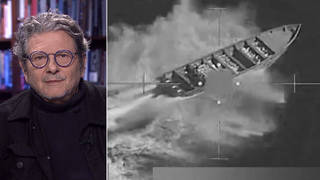
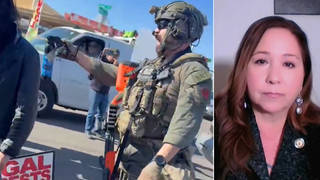
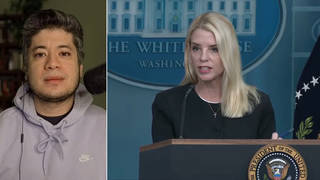
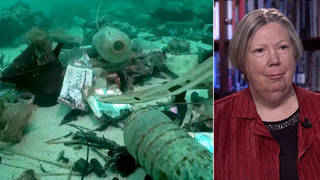

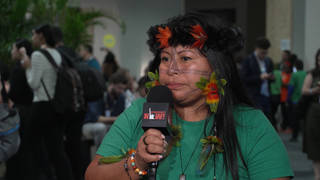
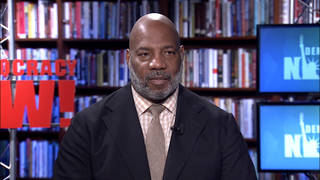
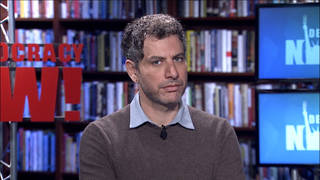
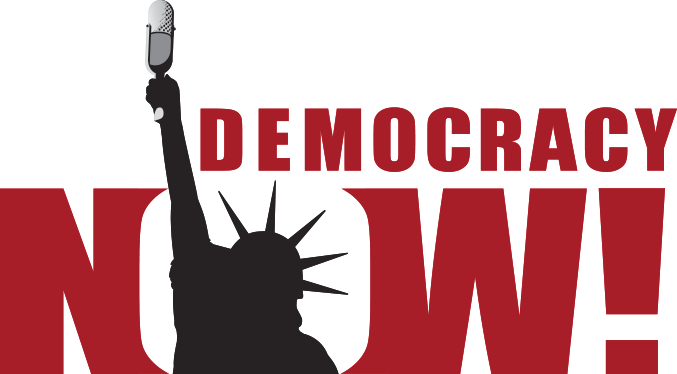
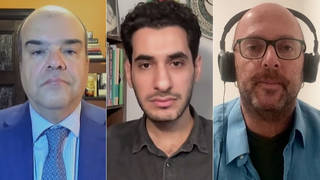
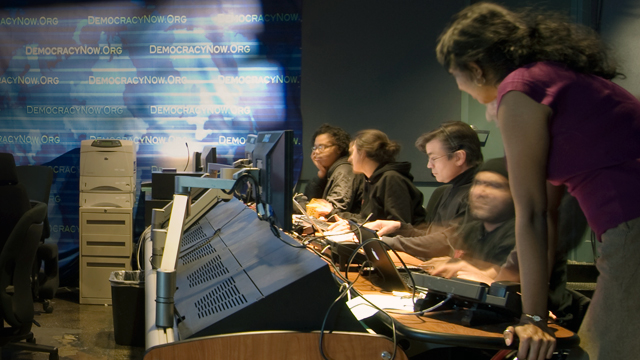
Media Options